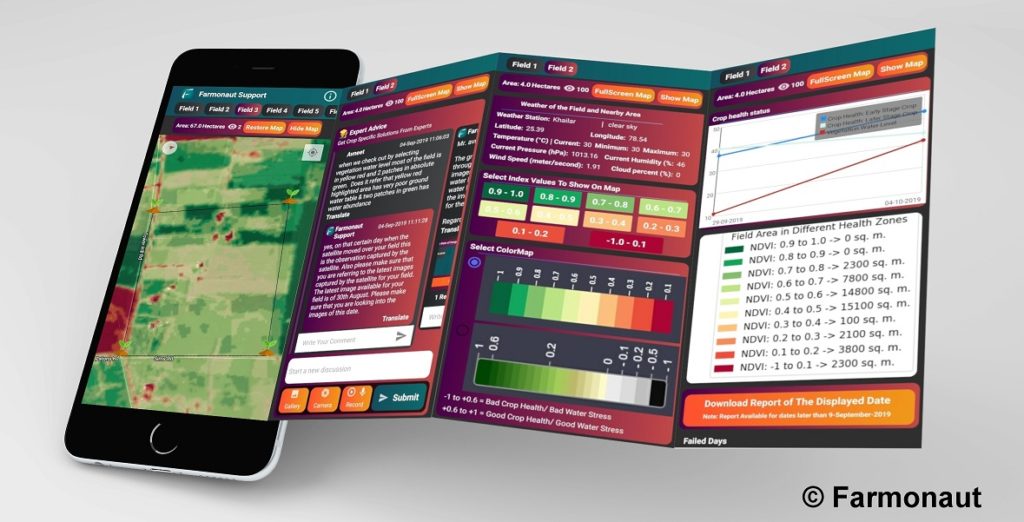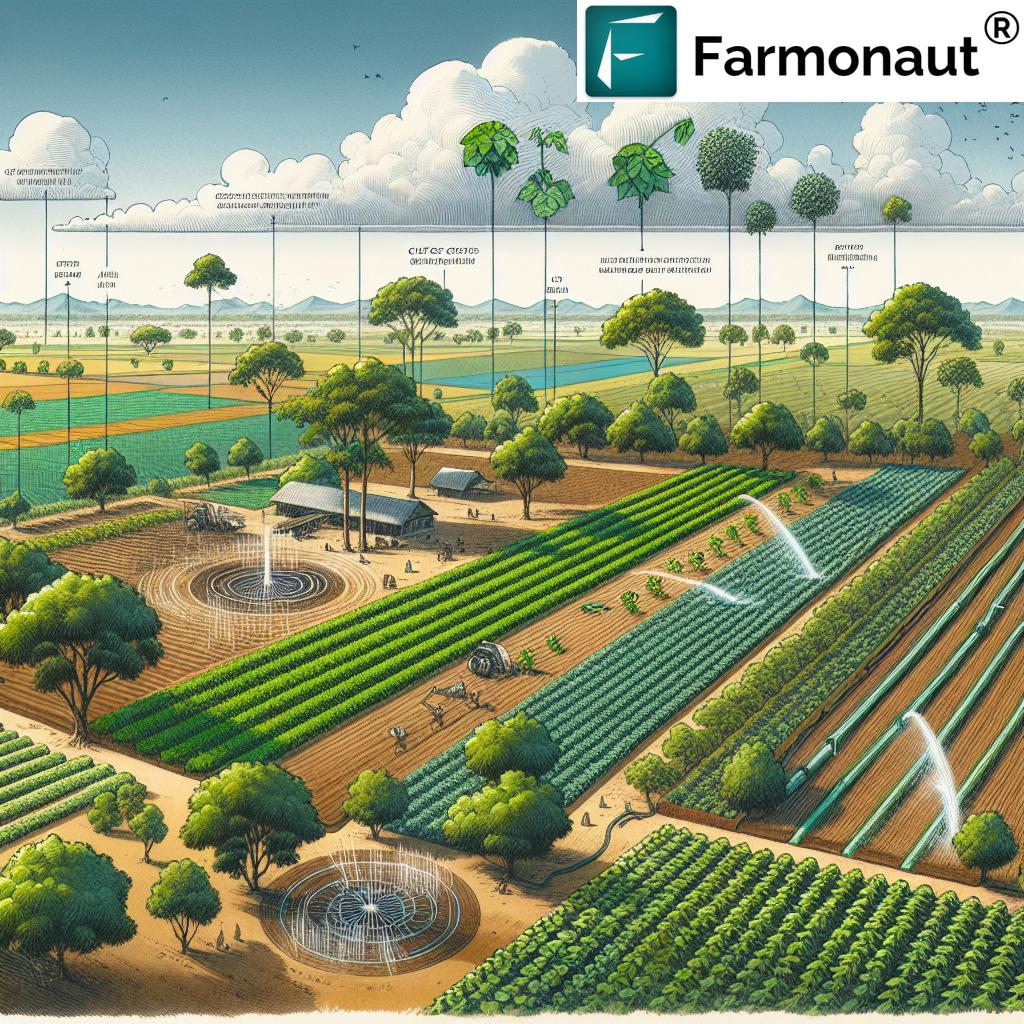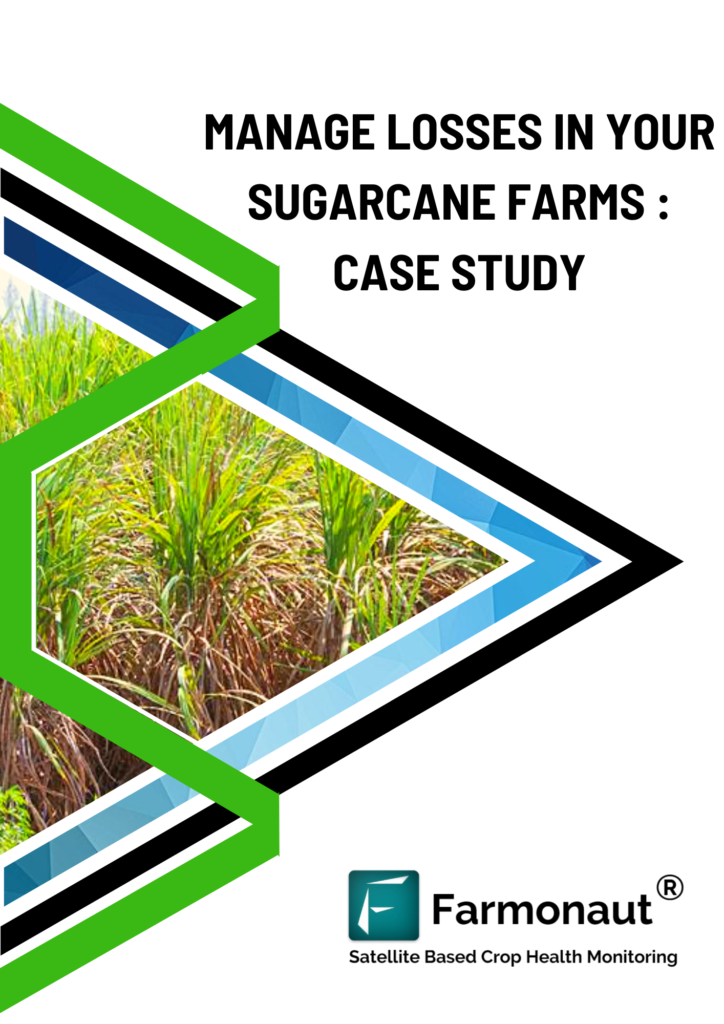How Do Agricultural Biologicals Work: 7 Key Methods
Agricultural biologicals are transforming modern farming practices by harnessing natural processes to enhance soil health, crop growth, and overall sustainability. These products, which include biopesticides, biofertilizers, and biostimulants, offer innovative, environmental alternatives to conventional chemical pesticides and fertilizers. In this comprehensive guide, we explore seven key methods by which agricultural biologicals function to boost productivity while fostering resilient agroecosystems.
Whether you’re interested in biopesticides for crop protection, biofertilizers for soil health, or biostimulants for plant growth, understanding these methods can help you make informed decisions that support sustainable farming practices and natural pest control in agriculture.
What are Agricultural Biologicals?
Agricultural biologicals encompass a diverse array of products derived from living organisms or natural materials. They are used to support crop health, productivity, and sustainability. These products include:
- Biopesticides – biologically derived agents for pest control
- Biofertilizers – microorganisms that enhance nutrient availability
- Biostimulants – substances or microbes that improve plant vigor
Unlike chemical pesticides and fertilizers, these biological solutions offer environmental and safety advantages for plants, beneficial organisms, and the ecosystem.
Why Choose Agricultural Biologicals?
Agricultural biologicals are at the forefront of sustainable farming practices. As concerns grow over the environmental impact of conventional agrochemicals, farmers and agribusinesses are increasingly transitioning to organic alternatives to chemical pesticides and fertilizers. The advantages include:
- Reduced toxicity to non-target organisms and the environment
- Lower risk of residues on crops and in soil
- Improved soil structure and biodiversity
- Sustainable pest and nutrient management
Explore our cutting-edge Farmonaut app on Web, Android, or iOS, and discover how you can implement precision agriculture and monitor crop health with real-time satellite insights!
Comparative Benefits of the 7 Key Agricultural Biological Methods
| Method Name | Description | Primary Benefit | Estimated Effect on Crop Yield (%) | Impact on Soil Health | Environmental Sustainability Score (1–5) |
|---|---|---|---|---|---|
| Antibiosis (Biopesticides) | Natural compounds produced by beneficial microbes that inhibit pathogen growth | Reduces pathogen pressure | +10% | Preserves soil microorganism balance | 5 |
| Mycoparasitism (Biopesticides) | Fungi attack and destroy pathogenic fungi | Direct biological control of fungi | +8% | Promotes soil health by reducing disease cycles | 5 |
| Competition (Biopesticides) | Beneficial organisms outcompete pathogens for space and nutrients | Limits pathogen establishment | +6% | Enhances microbial diversity | 5 |
| Induced Resistance (Biopesticides) | Stimulates plant’s systemic defenses | Enhanced crop resistance | +12% | Boosts plant resilience in soil | 5 |
| Nitrogen Fixation (Biofertilizers) | Microbes convert atmospheric nitrogen for plant use | Increases N availability | +20% | Improves soil fertility | 5 |
| Phosphate Solubilization (Biofertilizers) | Microorganisms make insoluble phosphates plant-accessible | Enhances phosphorus uptake | +15% | Boosts root growth, soil structure | 5 |
| Biostimulant Application | Substances/microbes that stimulate growth, stress resistance | Improves yield and resilience | +10% | Promotes soil microbial health | 5 |
Biopesticides: Advanced Natural Pest Control in Agriculture
Biopesticides are biologically derived agents used to control a wide range of pests, including insects, fungi, bacteria, and nematodes. Unlike conventional chemical pesticides, biopesticides offer an alternative with reduced environmental impact and lower toxicity to non-target organisms. This not only helps in controlling pathogens but also preserves overall ecosystem health.
Let’s explore four primary modes of action through which biopesticides work:
1. Antibiosis
- Biopesticides based on microorganisms like certain Bacillus species produce antimicrobial compounds (such as lipopeptides).
- These antibiotic substances disrupt pathogen cell membranes, inhibiting their growth, reproduction, and ultimately causing cell death.
- Example: Bacillus subtilis strains are known to produce lipopeptides, protecting roots from soil-borne pathogens (biocomm.eu).
2. Mycoparasitism
- Some fungal biopesticides, notably Trichoderma species, act by directly attacking and consuming pathogenic fungi.
- This process involves secretion of enzymes (such as chitinases and glucanases) that degrade target pathogen cell walls, leading to the destruction of harmful fungi and a reduction in crop disease (sciencedirect.com).
3. Competition
- Beneficial microorganisms can rapidly colonize plant surfaces and the rhizosphere, using up available nutrients and space
- This competitive colonization prevents the establishment of pathogens and creates an environment less conducive to disease (extensionpubs.unl.edu)
4. Induced Resistance
- Certain biopesticides can stimulate the plant’s own defense mechanisms, activating systemic acquired resistance (SAR) and induced systemic resistance (ISR).
- The immune response is bolstered, providing enhanced crop resistance naturally against a broad spectrum of pathogens and pests. This reduces dependence on chemical pesticides and encourages sustainable farming practices (vegetables.bayer.com).
Biopesticides for crop protection are increasingly being utilized in integrated pest management systems for both large-scale and smallholder farms, making them central to organic alternatives to chemical pesticides and promoting sustainable agriculture.
Biofertilizers for Soil Health & Crop Growth
Biofertilizers are agricultural biological products that contain beneficial living microorganisms. When applied to soil or plants, they act to improve nutrient availability and enhance soil fertility. Their unique mechanisms support soil health and sustainable plant productivity.
Let’s detail the four key mechanisms by which biofertilizers for soil health operate:
1. Nitrogen Fixation
- Nitrogen-fixing bacteria, including Rhizobium species and free-living genera, form symbiotic relationships with leguminous plants.
- They convert atmospheric nitrogen into plant-useable forms, significantly enhancing soil fertility and reducing the need for synthetic nitrogen fertilizers.
- Results in higher yields and sustainable improving nutrient uptake in crops (nurturegrowthbio.com).
2. Phosphate Solubilization
- Beneficial bacteria such as Bacillus and Pseudomonas species have enzymes and acids that solubilize insoluble phosphates in the soil.
- This process improves crop phosphorus acquisition, supporting stronger roots and more robust plant growth (nurturegrowthbio.com).
3. Degradation of Organic Matter
- Fungal biofertilizers such as Trichoderma decompose complex organic materials, breaking down plant residues and releasing vital nutrients.
- This improves soil structure and water retention, enabling healthier and more resilient plants (sciencedirect.com).
4. Production of Growth-Promoting Substances
- Some biofertilizer microbes produce phytohormones like auxins, cytokinins, and gibberellins.
- These hormonal signals stimulate plant cell division and root development, resulting in greater crop biomass, yield, and improving nutrient uptake in crops abundantly (nurturegrowthbio.com).
Overall, biofertilizers offer organic alternatives to chemical fertilizers, help enhance soil biodiversity, and play a foundational role in advancing sustainable farming practices.
Assess carbon footprinting of your farm using Farmonaut’s advanced satellite data platform to minimize emissions, increase sustainability, and comply with climate-friendly agriculture.
Biostimulants for Plant Growth and Productivity
Biostimulants are products—either natural substances or beneficial microorganisms—that boost a plant’s vitality without directly targeting pests or pathogens. They’re essential for maximizing crop yields, improving stress tolerance, and enhancing quality during crucial growth periods. Here’s how biostimulants for plant growth function:
1. Enhancement of Nutrient Uptake
- Biostimulants influence plant physiology and root architecture, facilitating better absorption of nutrients from the soil.
- This ensures efficient use of all applied and natural inputs, increasing overall yield potential (nurturegrowthbio.com).
2. Improvement of Stress Tolerance
- With the right biostimulants, plants can better withstand drought, high salinity, and temperature extremes.
- These products activate plant defenses, helping ensure consistent growth and yield—even in challenging environments (nurturegrowthbio.com).
3. Induction of Plant Defense Mechanisms
- Biostimulants can stimulate production of defense-related proteins and enzymes, making plants less susceptible to both pests and diseases.
- Crop resistance is naturally improved, reducing the need for external pesticides (vegetables.bayer.com).
4. Promotion of Soil Health
- By nurturing beneficial microorganisms for plants, biostimulants enhance soil structure, fertility, and biodiversity.
- This framework leads to long-term productivity and reduces dependency on synthetic inputs (nurturegrowthbio.com).
Biostimulants complement biofertilizers and biopesticides, forming an integrated biological crop management approach.
Track your harvest from farm to market with Farmonaut Product Traceability. Ensure transparency and authenticity for every batch.
Integrated Use: Building Resilient Agricultural Systems
The real potential of agricultural biologicals is realized through the integration of biopesticides, biofertilizers, and biostimulants into holistic farm management systems.
- Diverse mechanisms of action reduce the risk of resistance build-up in pests and pathogens.
- Synergistic effects improve crop yield, soil health, and environmental sustainability.
- Enhanced soil biodiversity and better nutrient cycling—leading to increased carbon sequestration in farming lands (revistacultivar.com).
- Reduced use of synthetic fertilizers and chemical pesticides—minimizing environmental risks and improving food safety.
This integrated approach forms the bedrock of sustainable agriculture—balancing productivity with environmental stewardship.
Need satellite-based farm verification for loans or insurance? Discover Farmonaut’s Crop Loan & Insurance Verification Services.
How Farmonaut Supports Sustainable Agriculture
At Farmonaut, we empower farmers, agribusinesses, and policymakers to harness the benefits of agricultural biologicals through smart, data-driven solutions. Here’s how our platform aligns with new-age sustainable farming:
- Satellite-Based Crop Health Monitoring: We provide actionable intelligence on vegetation status, soil health, moisture, and pest presence, supporting targeted application of biological products.
- AI Advisory (Jeevn): Real-time guidance on nutrient management, water scheduling, and pest risk—ensuring resources are deployed sustainably and efficiently.
- Supply Chain Traceability: Blockchain-powered tracking for organic and sustainable farm products.
- Fleet Management & Resource Optimization: See our Fleet Management system for effective agri-logistics, reducing fuel use and emissions.
- Carbon Footprint Tracking: We help farm enterprises calculate and reduce their carbon emissions using real-time remote sensing (More details).
- API Integration: Access our powerful agricultural and weather data for your own apps or research (API | Developer Docs).
- Large-Scale Farm & Plantation Management: With our Agro Admin App, governments and agribusiness can monitor thousands of fields with ease.
- Precision in Organic Advisory: Our tech supports organic and biological inputs, minimizing overuse of agrochemicals and bolstering sustainability.

With our comprehensive suite, anyone—from smallholder farmers to large agribusinesses—can scale their sustainable farming efforts and tap into the far-reaching advantages of agricultural biologicals.
Frequently Asked Questions: Agricultural Biologicals
What are agricultural biologicals used for?
Agricultural biologicals are used to improve soil health, boost plant growth, enhance crop resistance, increase nutrient uptake, control pests and pathogens, and reduce the reliance on chemical pesticides and fertilizers.
How do biopesticides differ from synthetic pesticides?
Biopesticides are derived from natural sources such as microbes, fungi, or plant extracts, and they act through mechanisms like antibiosis, mycoparasitism, competition, and induced resistance. Compared to synthetic pesticides, they have lower toxicity, decompose rapidly, and decrease the risk of environmental contamination and resistance development.
Can biofertilizers replace all chemical fertilizers?
Biofertilizers can significantly reduce or even replace synthetic fertilizers in many systems by improving nutrient cycling, soil fertility, and plant health. However, their effectiveness depends on crop type, soil conditions, and management practices.
What are the benefits of integrating biopesticides, biostimulants, and biofertilizers?
Integration provides synergistic benefits—increased crop yield, improved soil health, greater resistance to diseases and pests, and reduced chemical input usage. This holistic approach forms the foundation of sustainable farming practices.
How can I monitor the effectiveness of biological products on my farm?
Digital tools like Farmonaut’s satellite-based management solutions allow users to track crop health, detect nutrient deficiencies, and gain insights for timely application of biological products, maximizing effectiveness and sustainability.
Are agricultural biologicals suitable for all farm sizes and types?
Yes, agricultural biologicals are versatile and can be employed in smallholder, large-scale farms, organic systems, and conventional agriculture as part of integrated management strategies.
Conclusion
Agricultural biologicals offer an eco-friendly and scientifically proven path to sustainable farming by leveraging natural organisms and materials to enhance plant health, soil quality, and crop productivity. The 7 key methods—from the antimicrobial action of biopesticides to the soil-revitalizing processes of biofertilizers and the growth-stimulating capabilities of biostimulants—provide distinct, complementary ways to revolutionize modern agriculture.
By integrating these biological products into your farm management system, you not only boost yield and crop quality but also champion efforts for global food security and environmental stewardship. At Farmonaut, we are committed to supporting you on this journey with innovative, data-driven, and affordable technological solutions designed for all scales and types of agriculture.
Embrace sustainable farming practices—let agricultural biologicals work for you!





















